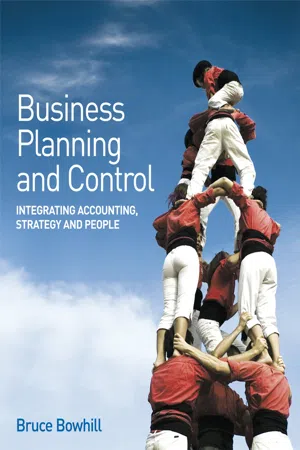Business
Average Rate of Return
The average rate of return is a financial metric used to measure the gain or loss on an investment over a specified period, expressed as a percentage. It is calculated by dividing the total return on the investment by the initial investment amount. This metric helps businesses assess the profitability and performance of their investments.
Written by Perlego with AI-assistance
Related key terms
1 of 5
5 Key excerpts on "Average Rate of Return"
- eBook - ePub
Finance Essentials
The Practitioners' Guide
- Scott Moeller(Author)
- 2012(Publication Date)
- Bloomsbury Information(Publisher)
Key Management Ratios. 4th ed. London: FT Prentice Hall, 2008.See Also:
Earnings per SharePassage contains an image
Rate of Return
This may well be as basic and important a computation as there is in finance.WHAT IT MEASURES
The annual return on an investment, expressed as a percentage of the total amount invested. It also measures the yield of a fixed-income security.WHY IT IS IMPORTANT
Rate of return is a simple and straightforward way to determine how much investors are being paid for the use of their money, so that they can then compare various investments and select the best—based, of course, on individual goals and acceptable levels of risk.Rate of return has a second and equally vital purpose: As a common denominator that measures a company’s financial performance, for example, in terms of rate of return on assets, equity, or sales.HOW IT WORKS IN PRACTICE
There is a basic formula that will serve most needs, at least initially: Rate of return = (Current value of amount invested - Original value of amount invested) ÷ Original value of amount invested If $1,000 in capital is invested in stock, and one year later the investment yields $1,100, the rate of return of the investment is calculated like this: (1100- 1000) + 1000 = 0.1 = 10%Now, assume $1,000 is invested again. One year later, the investment grows to $2,000 in value, but after another year the value of the investment falls to $1,200. The rate of return after the first year is: - eBook - PDF
- Carl Warren(Author)
- 2017(Publication Date)
- Cengage Learning EMEA(Publisher)
Use of Investment Analysis Methods offic Business Insight Return on investment method Cash payback method Net present value method Internal rate of return method 0% 10% 20% 30% 40% 50% 60% 70% 80% 90% 15% 53% 85% 76% Percent of U.S. Companies Reporting Using These Methods “Always” or “Often” 653 Chapter 15 Capital Investment Analysis Copyright 2018 Cengage Learning. All Rights Reserved. May not be copied, scanned, or duplicated, in whole or in part. WCN 02-300 To illustrate, assume that management is evaluating the purchase of a new machine as follows: The estimated average annual income from the machine is $50,000 ($200,000 4 4 years). The average investment is $250,000, as computed below. Average Investment 5 Initial Cost 1 Residual Value 2 5 $500,000 1 $0 5 $250,000 2 The Average Rate of Return on the average investment is 20%, as computed below. Average Rate of Return 5 Estimated Average Annual Income Average Investment 5 $50,000 5 20% $250,000 The Average Rate of Return of 20% should be compared to the minimum rate of return required by management. If the Average Rate of Return equals or exceeds the minimum rate, the machine should be purchased or considered for further analysis. Capital investment proposals can be ranked by their rates of return. The higher the Average Rate of Return, the more desirable the proposal. For example, assume that management is considering two capital investment proposals with the following average rates of return: Proposal A Proposal B If only the Average Rate of Return is considered, Proposal B, with a rate of return of 25%, is preferred over Proposal A. The Average Rate of Return has the following advantages: ▪ It is easy to compute. ▪ It includes the entire amount of income earned over the life of the proposal. ▪ It emphasizes accounting income, which is often used by investors and creditors in evaluating management performance. - eBook - ePub
- Wai-Sum Chan, Yiu-Kuen Tse;;;(Authors)
- 2017(Publication Date)
- WSPC(Publisher)
4
Rates of Return
The performance of investment projects, funds and portfolios of assets is typically measured by their rates of return. The most important measure of the return of a project or fund is the internal rate of return, also called the yield rate. In this chapter we define the internal rate of return and explain how it can be applied to various investment projects. We discuss measures of 1-period rate of return, including methods such as the dollar-weighted rate of return, time-weighted rate of return, as well as some approximation methods. Performance of funds over an extended period of time can be measured by the geometric mean rate of return and arithmetic mean rate of return. We also show how returns of a portfolio can be calculated from the returns of its component assets.Short selling is a strategy through which investors can leverage. We consider the computation of the rate of return of a short-selling strategy. We also discuss methods of crediting interests in a fund, including the investment-year method and the portfolio method. Finally, we discuss methods of project appraisal, namely, the criteria of deciding whether or not to invest in a project.Learning Objectives• Internal rate of return (yield rate)• 1-period rate of return of a fund: time-weighted rate of return and dollar-weighted (money-weighted) rate of return• Rate of return over longer periods: geometric mean rate of return and arithmetic mean rate of return• Portfolio return• Return of a short-selling strategy• Crediting interest: investment-year method and portfolio method• Capital budgeting and project appraisal4.1 Internal Rate of Return
Consider a project with initial investment C0 to generate a stream of future cash flows. For simplicity, we assume the cash flows occur at regular intervals, say, annually. The project lasts for n years and the future cash flows are denoted by C1 ,···, Cn . We adopt the convention that cash inflows to the project (investments) are positive and cash outflows from the project (withdrawals) are negative. We define the internal rate of return (IRR) (also called the yield rate) as the rate of interest such that the sum of the present values of the cash flows is equated to zero. Denoting the internal rate of return by y - eBook - PDF
Business Planning and Control
Integrating Accounting, Strategy, and People
- Bruce Bowhill(Author)
- 2014(Publication Date)
- Wiley(Publisher)
[ 90 ] C H A P T E R 4 (i) Calculating average profit For project A the first step is to work out the average annual profit. The cash inflows from trading over the five years are 0 + £100,000 + £300,000 + £600,000 + £1,300,000 = £2,300,000. The asset cost £1,000,000 to purchase. The value at the end of the project was zero (nil residual value). Depreciation on the project is therefore £1,000,000. £ Net cash flow from trading 2,300,000 Depreciation 1,000,000 Profit over the five years 1,300,000 Average profit = £1,300,000 5 = £260,000. (ii) Calculate the ARR Divide the average profit by the investment, in this case £1,000,000. Therefore ARR = £260,000 £1,000,000 = 26%. If the ‘hurdle’ rate ARR of the organization was 25% then using this criterion in isolation, the investment would be acceptable. Figure 4.3 Accounting rate of return for project A Activity 4.2 Calculate the ARR of projects B and C. Note that some organizations quote the accounting rate of return by dividing the average accounting profit by the average capital investment rather than the initial capital investment. For project A: Average capital investment = initial value + ending value / 2 = £1 000 000 + 0 / 2 = £500 000 Accounting rate of return would be £260,000 £500,000 = 52%. The advantages and disadvantages of accounting rate of return Advantages The ARR technique is popular because: 1. It is familiar to many managers, for example, divisional managers are often assessed on accounting measures such as return on capital employed or return on investment. These accounting measures are very similar to ARR. 2. It considers the whole life of the project. [ 91 ] C A P I T A L I N V E S T M E N T D E C I S I O N S Disadvantages ARR treats all cash flows as being equally important, even though early cash flows are ‘worth’ more than later cash flows. - eBook - ePub
Understanding Investments
Theories and Strategies
- Nikiforos T. Laopodis(Author)
- 2020(Publication Date)
- Routledge(Publisher)
The two basic elements of investing are risk and (expected) return. The objective of the investor is to maximize his expected return, subject to constraints including his risk and tolerance (or degree of risk aversion). Alternatively, the investor can minimize his risk exposure, without sacrificing a certain expected rate of return (the target rate of return). Therefore return and risk are crucial metrics and the investor must know how to calculate them and interpret them. There are several ways to measure return and all of them will be presented in the next section. The risk of the individual securities the investor holds in his portfolio, as well as his overall (or portfolio) risk, is important for the investor; he must also know how to compute and interpret it. This will be covered in the third section.Recall that risk and expected return go together in the sense that you cannot concentrate on return and ignore risk. That said, comments like “I want to make as much money as possible” or “I expect to earn that much from investing in a security” without mentioning the level of risk these investments carry do not make sense or are worthless.3.2 Measuring return
In order to measure the return of an investment asset, we need first to realize that it is composed of two parts: capital gain/loss and the distributions. The capital gain/loss is the result from a change in the price of the asset. Specifically, a gain is an increase in the price of the asset (or price appreciation) and a loss is a decrease in the price of the asset (or price depreciation). In other words, if you bought the asset at, say $10, and you sold it at a higher/lower price you would realize a capital gain/loss, respectively. The distributions component refers to the income part of the asset (or the periodic cash flows that you receive from owning the asset). Distributions can be dividends from owning stocks, interest income from owning bonds, or other income from other assets. When we express each component in terms of the purchase price of the asset, we derive the component’s yield. Adding these two components gives us the total return on the asset expressed either in dollar terms or percentage terms (rates of return).1Total dollar return = capital gain/loss + distributions (1a)Total rate of return= ( 1 b )c a p i t a 1 g a i n / 1 o s s + d i s t r i b u t i o n sp u r c h a s e p r i c e o f a s s e t3.2.1 Holding period return
Let us work with an example before we derive the basic return formula. Assume that you have bought a share of stock of company X and paid $20 for it. In the period during which you held the stock you received a dividend of $1 from the company. You held the stock for one year and you sold it for $22 afterwards. What is your return?
Index pages curate the most relevant extracts from our library of academic textbooks. They’ve been created using an in-house natural language model (NLM), each adding context and meaning to key research topics.




